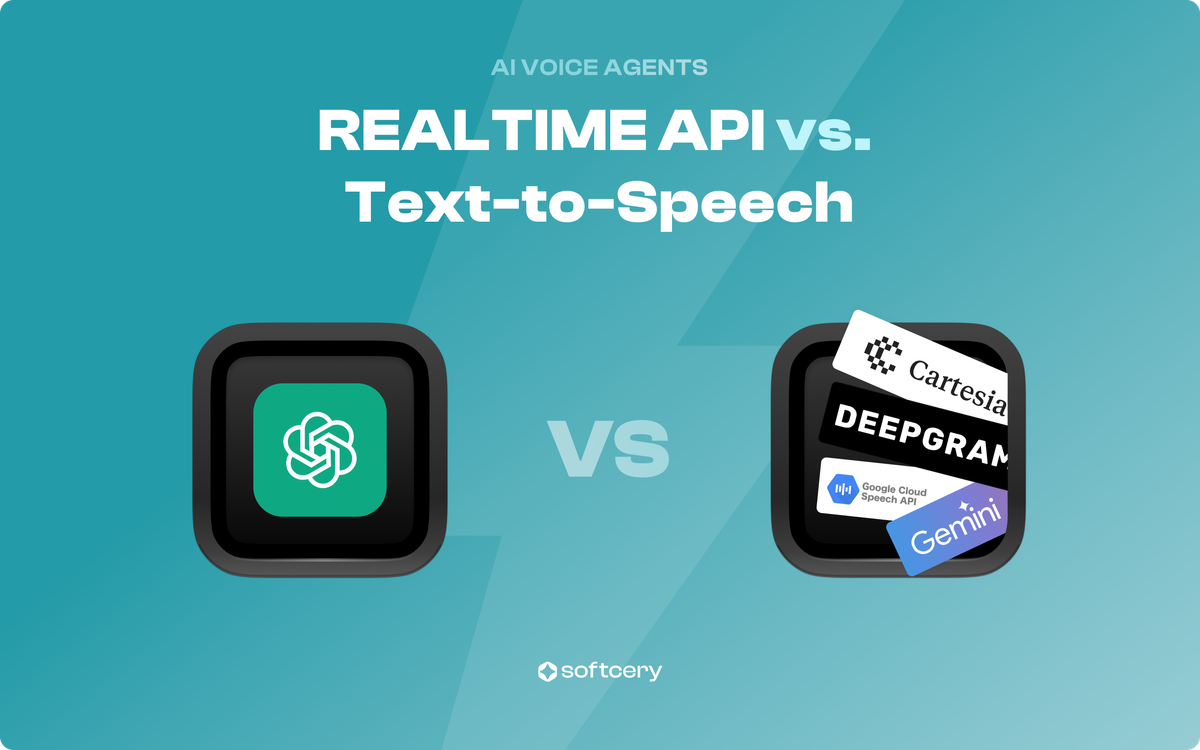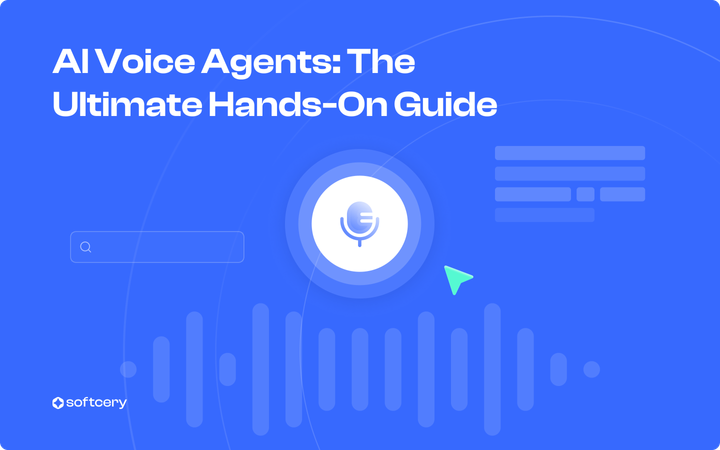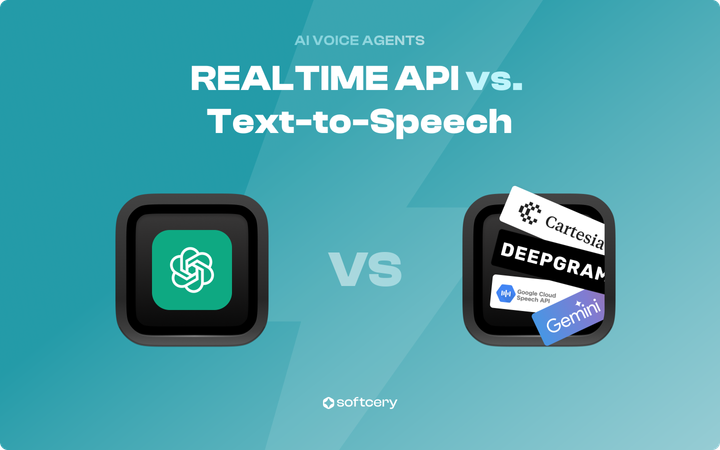Choosing the Right LLM for an AI Voice Agent
LLM selection is crucial for business AI applications, balancing factors from cloud vs self-hosted deployment to privacy and multilingual support. This guide helps tech leaders match LLM capabilities with their organization's needs and security requirements.

Understanding LLMs
Picking the right Large Language Model (LLM) impacts everything from functionality to user experience and efficiency of interacting with technology. It is crucial to understand what these models bring to multimodal systems, and weigh them on cost, performance, privacy, and deployment.
In essence, LLMs are statistical deep learning models trained on large amounts of data in an unsupervised way. They can address different tasks, including text classification, question answering, document summarization, text prediction, and text generation problems. LLMs are used to create chatbots, translation systems, and various types of AI agents.
LLMs drive how AI voice agents understand language. They interpret text, gauge context, and generate responses, making them essential for multimodal systems. These systems process different types of input like text, voice, or images. In B2B SaaS, these agents streamline tasks across fields like healthcare, legal, and real estate, handling everything from scheduling to support. The better an LLM is at processing language, the smoother and more effective these interactions become. This blog post is part of our series about AI Voice Agents. We will focus specifically on how LLMs power these agents, providing a detailed guide on selecting the right LLM for your purpose, focusing on key factors you need to consider and practical applications to help you find the one that meets your specific needs.
2. Key Factors to Consider When Choosing an LLM
Choosing the right LLM requires balancing key factors to make a voice agent that performs well while protecting user data. It’s not just about selecting the model with the best ability to handle language precisely or respond instantly—each choice affects how users feel during interactions, how affordable the system is to run, and how safely data is managed. Businesses must assess factors such as the accuracy of responses, response speed, and support for multiple languages, weighing them against real security requirements and practical needs for seamless operations.
Now, we’ll go through these factors in detail.
- Price (Free vs. paid models, open-source trade-offs)Choosing between free and open-source and commercial/cloud models impacts scalability and long-term costs. Open-source models (such as LLaMA, Mistral, etc.) offer flexibility and can be adapted to suit specific needs. However, they require infrastructure to deploy and maintain, meaning that the primary cost is associated with hosting the model. Open-source models are ideal for companies that need to process large volumes of data, such as processing tens or hundreds of millions of requests or generating responses for applications with steady traffic, offering long-term savings.On the other hand, commercial/cloud models (like OpenAI's GPT or Anthropic's Claude) are often easier to use, because they are already deployed. They use a per-use or subscription pricing model, enabling predictable costs for production environments. They can be more budget-friendly options for small or short-term projects but they may not be as economical for long-term needs with consistently high usage.
- Is it possible to fine-tune (adapting models to specific use cases)Fine-tuning is essentially the process of adapting an LLM to a specific task. It is not the same as building a model from scratch. It uses a pre-trained model as a starting point. The process involves additional training with a smaller, domain-specific dataset, enabling the model to specialize in particular tasks. This approach enhances performance in targeted areas while requiring less data and computational power compared to training a model from the ground up.Fine-tuning can be used when you need to achieve a style, tone, or terminology tailored to your niche. For example, it can help a legal AI chatbot process precise legal terminology and offer accurate examples relevant to legal conversations. A non-fine-tuned model may struggle with such specialized knowledge.
- Security and Privacy
- Handling sensitive data and user privacy
- Managing biases in model outputs
- Handling content filtering (https://platform.openai.com/docs/guides/moderation)When developing AI systems, security and privacy are paramount, especially when handling user data. Ensuring compliance with data protection laws maintains user trust. Key considerations include:
Latency (response time comparison)Latency refers to the time delay between sending a request to an LLM API and receiving a response. It plays an important role in the performance of LLM applications. Low latency is crucial when you want to minimize delays for faster interactions (e.g., real-time chatbots). Higher latency results in longer delays, which can lead to significant performance issues where quick responses are crucial. However, for tasks where it is less important, such as those requiring more complex or detailed analysis, higher latency may not be an issue and can be acceptable for advanced features. Some models, like o1-preview, may have higher latency but provide more sophisticated capabilities.
Context window sizeThe context window size refers to the maximum number of tokens a model can process in a single user request. The larger the context window, the more text the model can analyze and use to generate responses. Cloud-based models now support extended context windows, allowing them to handle long documents and more complex tasks, such as analyzing entire codebases and libraries. LLMs with the largest context windows range from 128k to 100m tokens. Open-source models still have a limit of 4-8k tokens, which can be problematic in some cases.
Performance- Accuracy of response LLM accuracy measures how well the model's output aligns with expected results, how well the LLM understands the context, and how accurately information is produced in response. Achieving high accuracy is essential for tasks that require reliable and precise outputs. To evaluate accuracy, developers use various metrics and benchmarks to test the model's performance, such as BLEU, GLUE, perplexity, and MMLU . - Time of responseResponse time is the number of tokens processed per second while the model is generating tokens. A token is the smallest unit of text that the model can understand. It can be a word, a character, or part of a word. Response time is influenced by a variety of factors, including the model’s size, optimization, and hardware. Larger models, like Anthropic’s Sonnet, tend to generate nuanced responses but operate slower, while smaller models, like Haiku, prioritize speed at the cost of advanced reasoning.
- Handling sensitive data and user privacy. AI applications often process confidential information, so implementing data governance is essential. Techniques like data anonymization, encryption, and controlled access protect user information and minimize breach risks. Regular audits and updates to data protection practices keep security measures aligned with emerging threats.
- Managing biases in model outputs. AI models can inherit biases present in their training data, leading to unfair or inaccurate outcomes. To mitigate these biases, it's essential to use balanced and diverse training datasets, regularly monitor the model's outputs, and implement fairness-aware algorithms. Actively including diverse perspectives during the development process also helps reduce unintended biases, ensuring more equitable and accurate model behavior.
- Handling content filtering. Content filtering prevents harmful or inappropriate outputs. For example, OpenAI provides tools like the content moderation API, which identifies and filters sensitive or harmful content. Additionally, many AI models include built-in safeguards to reduce harmful content generation, ensuring that outputs align with ethical guidelines during response creation. These measures help AI systems comply with company policies and prioritize user safety. For more details, refer to OpenAI’s moderation guide.
- Multilingual supportServing global clients? Models with multilingual capabilities enhance user experience and broaden reach. LLMs support multiple languages, enabling AI-driven customer support systems in local languages and facilitating cross-language communication.
- Cloud vs Self-hostedWhen choosing between a cloud provider or self-hosting for a Large Language Model (LLM), the differences lie in infrastructure, scalability, and data security. Cloud providers offer fast implementation with basic setup, though they may come with data governance concerns and rate limits. Self-hosting gives control over data privacy and customization, making it suitable for regulated industries, but requires investment in infrastructure and may struggle with scalability while requiring resources for maintenance and optimization.
3. Popular LLM Options (Benchmarks)It can be tough to select the right LLM, as there are so many different options available. You need to consider all factors we discussed in the previous section, such as price, performance, scalability, the possibility of fine-tuning, security, and hosting.
For up-to-date comparisons, visit platforms like Artificial Analysis, which provide the latest benchmarks and features.
Now, let’s look at popular models.
- OpenAI’s GPT Models (gpt-4o, gpt-4o-mini, o1-preview)OpenAI’s GPT models, including GPT-4o and GPT-4o-Mini, are designed to offer robust natural language processing for a variety of applications. Building on the success of previous models, these versions maintain OpenAI’s reputation for versatility in tasks like drafting emails, generating conversational responses, producing code, and answering complex questions. Ideal for real-time interactions in B2B SaaS, GPT-4o models are equipped for accurate translations, creative content generation, and reliable data analysis. For businesses balancing performance and cost, GPT-4o-Mini delivers similar capabilities in a lighter package, making it an efficient choice for scalable, cost-effective deployment. For more complex tasks, o1-preview may be a better option. It offers highly nuanced results but comes with slower response times compared to GPT-4o, making it ideal for situations where accuracy is prioritized over speed.
- Anthropic’s Claude (sonnet, haiku, etc)Anthropic’s Claude models, such as Claude-Sonnet and Claude-Haiku, are crafted with an emphasis on empathy and ethical considerations, making them well-suited for applications that require nuanced, human-like interactions. Claude models excel in producing thoughtful, secure, and compassionate responses, particularly valuable in mental health support or coaching roles where sensitivity is key. With high safety standards, Claude ensures responsible interactions, catering to businesses that prioritize ethical AI communication in sensitive sectors. Each variant, from Claude-Sonnet to Claude-Haiku, offers unique strengths for tailored user engagement.
- Google’s GeminiGoogle’s Gemini, developed by Google DeepMind, is designed for high-demand environments requiring fast, multilingual support. Known for its swift processing and extensive language capabilities, Gemini is particularly valuable for B2B SaaS applications that serve a global audience. Although limited in niche-specific customization, Gemini’s speed and reliable multilingual support make it an ideal solution for companies looking to enhance customer service efficiency and respond quickly across language barriers, effectively supporting diverse and high-frequency user interactions.
- LLaMA/Mixtral/other open-source models including SLLMsOpen-source models like LLaMA and Mixtral provide extensive flexibility and control, ideal for companies with specific privacy and customization needs. Unlike commercial models, these community-driven models allow businesses to fine-tune AI behavior in-house, particularly valuable in sectors with strict privacy requirements like finance or healthcare. With the option for self-hosted deployment, open-source models such as Specialized Language Learning Models (SLLMs) enable organizations to balance data security with performance, making them well-suited for privacy-sensitive applications that require hands-on customization and rigorous data control.
This table compares LLM models, highlighting factors decision-makers should consider. It outlines each model's strengths and weaknesses to help you choose the best option based on your requirements.
Ideally, there should be a comparison table with model strengths, limitations, and best-use scenarios
4. Matching LLMs to Business Needs
Here we can provide the use cases and the best LLMs selected for them based on key factors and provide the reasoning behind themYour business needs will dictate the features that matter most in an LLM. Here are a few common scenarios, based on the models available today. Keep in mind, as technology evolves, the best LLM for a specific use case may change over time. Here are a few common scenarios:
- Healthcare SupportIn healthcare, accuracy and speed are critical when managing patient interactions. OpenAI’s GPT-4o, with its ability to process natural language quickly, is ideal for tasks like patient scheduling and answering frequently asked questions. Moreover, its fine-tuning capabilities enable customization with medical terminology, ensuring responses are both precise and contextually appropriate. This allows healthcare providers to deliver timely and accurate service, enhancing patient experience and satisfaction.
- Real Estate AssistanceReal estate agencies often deal with clients from diverse linguistic backgrounds. Google’s Gemini excels in supporting multiple languages, making it an ideal choice for global real estate businesses. Its multilingual capabilities enable agents to engage with clients in their preferred languages, improving communication and expanding the reach of services. Whether it's handling inquiries or providing property details, Gemini ensures smooth conversations and increases the agency's accessibility in a competitive market.
- Financial ServicesIn the financial sector, where security and privacy are paramount, LLaMA offers self-hosted solutions that provide greater control over sensitive financial data. Self-hosted models like LLaMA allow financial institutions to implement strict privacy measures, ensuring customer data is securely processed and stored. This also mitigates concerns over data breaches and regulatory compliance, while offering the flexibility to adapt the model to the unique needs of financial services.
Choosing an LLM that aligns with your business needs improves response quality and enhances customer engagement, leading to better outcomes and fostering growth. By selecting a model that addresses your industry requirements, you can ensure that your voice agents are efficient, secure, and effective in meeting your goals.
5. Conclusion
- Recap of factors to consider
- Final tips for making an informed LLM choice
Choosing the right LLM for your needs is crucial for the successful implementation of AI and its performance. To make the best choice for your unique case, consider factors such as performance (accuracy, response speed), cost (open-source vs. commercial), security (privacy and data protection), and deployment options (cloud vs. self-hosted). These decisions should align with your business goals to ensure optimal efficiency and security.
This article provides an overview to help you make informed decisions and ensure your AI agents are effective, secure, and scalable, enabling your business to thrive.


